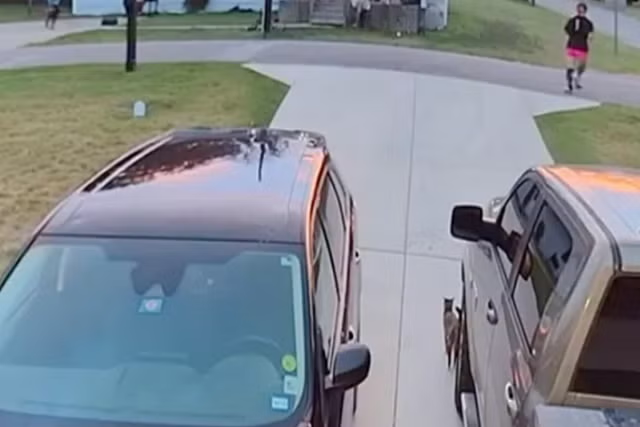
As the nights draw in and more of us spend longer driving after darkness has fallen, we’ll be more exposed to blinding headlights – and concerned drivers are taking action. Fourteen thousand of them signed an online RAC petition calling for a review on the brightness of car headlights for safety.
The good news is that in response, the Government has launched an independent probe into the issue. The not-so-good news is that there is no indication on when it might report.
What can the Government do?
Quite a lot actually. The policy and standards director for charity IAM Roadsmart, Nicholas Lyes, believes the Government could use the annual MOT test to help drivers. He said: “We could change the MOT test to fail a car if it is emitting a certain light that would be a road safety hazard.”
In addition, one of the benefits of Brexit is that Type Approval – the regulations that every new car sold in the UK must conform to for consumer safety – is now in the hands of the Government.
Type Approval governs headlights but matters are slightly complicated by lighting being agreed at United Nations level for global uniformity. Your heart may sink on seeing that, but the UN is already on the case with dazzling headlights.
Everyone who drives a car with LED headlights knows how effective they are at giving a better view of dark roads. But that’s only if they’re pointing at the tarmac. Load the boot of your car and your headlights will tilt upwards, blinding oncoming drivers.
To prevent this, the UN has decreed that all new cars must be fitted with automatic headlight levelling from 2027 onwards.
Changes won’t happen overnight
The road safety experts I spoke to welcomed the Government’s study. The RAC’s Rod Dennis explained: “This is only the beginning. There’s a long road in front. And even then, any changes will only affect new vehicles. But we want to get the study done and then go from there. We are cautiously optimistic.”
IAM Roadsmart’s Lyes added: “We think this is a very positive thing. This is a real problem and one that’s very complex so it’ll be difficult to understand what to do for the best, but it’s very welcome that they’re doing the research in the first place.”
And clinical adviser at the College of Optometrists, Dr Paramdeep Bilkhu, said: “Further research is needed to fully understand which headlight factors are responsible for glare so we can identify what needs to change while enjoying the benefits of better light technology.”
Is this just a UK problem?
We’re not the only country that wants to tackle headlight dazzle. “It’s an issue beyond the UK,” Dennis said. “We are in contact with other motoring clubs across Europe and they’re all concerned by it.
“The German government is doing research into this and the FIA (Federation Internationale de l’Automobile) is looking at it on a pan-European level. Any solution won’t just be UK only.”
What has research found about headlight dazzle?
The RAC has been asking drivers about blinding headlights since 2018. Its latest findings, published earlier this year, show that 85 per cent of drivers affected by headlight dazzle think the problem is getting worse.
Of the nine out of 10 drivers (91 per cent) who complain about being dazzled while driving, 74 per cent say it happens regularly. Two-thirds (67 per cent) reckon they have to slow significantly until their vision clears. Of these, 5 per cent claim to have nearly been involved in a collision because of headlight glare.
The issue of dazzling headlights is even limiting drivers’ mobility: Road safety charity IAM Roadsmart recently surveyed its members. Among its qualified advanced drivers, 4 per cent said they had stopped driving after dark while one-third (31 per cent) claimed to drive at night less than they used to.
What causes headlight dazzle?
Dr Bilkhu said patients are increasingly complaining about the brightness of headlights: “We know that glare is more common among older drivers, as with ageing the natural lens in the eye gradually becomes cloudier,” he said. “This can increase the effect of light scatter and make glare worse.
“For older people, recovery from being dazzled can take several seconds by which time the distance covered in a moving car can be significant, meaning there is greater risk of potential accident. There has been research that shows that glare can impact hazard recognition while driving, including pedestrian visibility, so it poses a safety risk.”
Does headlight glare cause many accidents?
We’ve all been driving when a car comes the other way with its main beam lights selected. You flash it in case the driver has forgotten and they return the favour – with bells on – proving that their main beams weren’t on, but that their dipped beams were poorly adjusted or simply super bright.
Even so, government figures for road crashes suggest glare from headlights isn’t a huge contributory factor. The most recent shows there were three fatal collisions caused by headlight dazzle in 2022. There were 38 resulting from drivers being blinded by the sun.
However, the data is flawed because it comes from police reports at crash scenes, which often aren’t comprehensive. Dr Bilkhu added: “We know that glare is often under-reported when this type of data is collected.”
Four reasons why headlights dazzle
As Lyes suggests, this is a complex issue. Cars are increasingly fitted with LED lights because they draw less electrical current, which is good for economy (fuel or battery). They’re more controllable, enabling all sorts of snazzy features such as welcome displays when you approach the car. And they’re smaller, allowing designers more freedom.
They’re also brighter than old-style halogen lights, with a more focused beam which our eyes struggle to adapt to at night.
Drive in a modern car and you’ll be impressed at how bright the lights are compared with older models. No worries, you can buy LED bulbs online to replace older cars’ halogen ones. Even better, they’re often less than £20 for a pair.
But they are deemed illegal because there’s no legislation governing replacing halogen bulbs with LEDs; regulation merely distaste how bright lights can be. And the lack of regulations governing halogen-replacement LED bulbs means they can be super bright and dazzle oncoming drivers. But there’s nothing to stop owners fitting them, except the knowledge that they’re illegal and might (if the driver is unlucky) be failed by MOT testers.
Poorly adjusted headlights of all varieties play their part, too. Information from the Driver and Vehicle Standards Agency says that about 5 per cent of cars every year fail an MOT because their lights aren’t properly adjusted.
Last but not least, the ever-increasing popularity of SUVs is thought to contribute to the problem. As these generally have a taller stance than more conventional models, their lights are situated at eye level for drivers in regular hatchbacks and saloons.
The problem caused by raised vehicles seems to be confirmed by official statistics. These show that 179 drivers said their road collision was caused by over-bright headlights, compared with two coach drivers and only one HGV driver. The implication is that the higher you are from the road, the less likely you are to be dazzled. More bad news for regular car drivers, then.
Disclaimer: The copyright of this article belongs to the original author. Reposting this article is solely for the purpose of information dissemination and does not constitute any investment advice. If there is any infringement, please contact us immediately. We will make corrections or deletions as necessary. Thank you.



